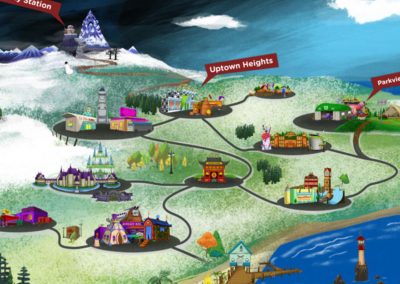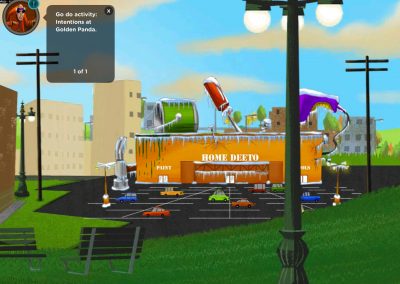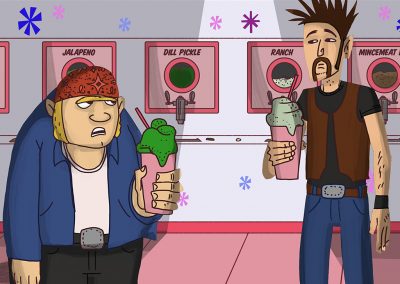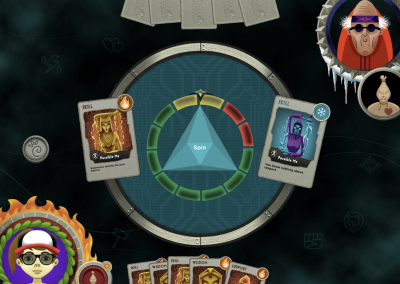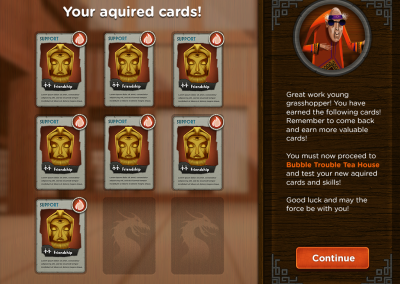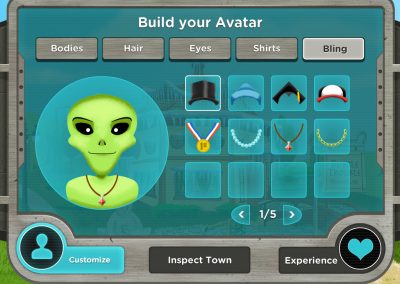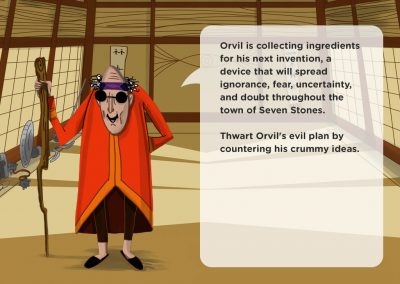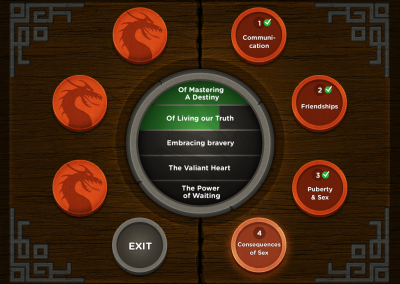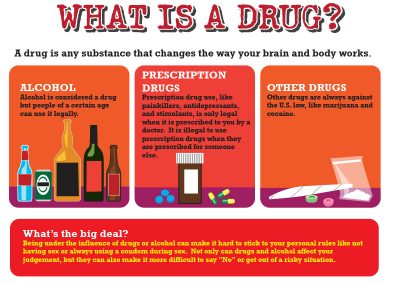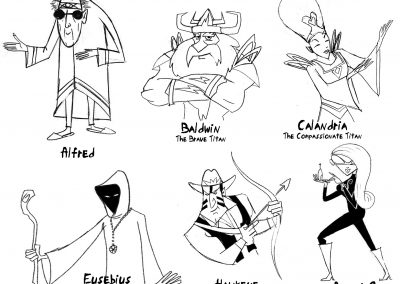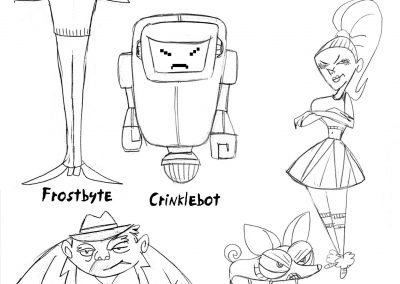The Secret of Seven Stones
summary
The Secret of Seven Stones (SSS) is an online adventure game developed by Dr. Ross Shegog, Associate Professor at the University of Texas at Austin, as part of a research initiative focused on adolescent health and parent-youth communication. Designed in collaboration with UTHSC and Radiant, the game aimed to address early adolescent unintended pregnancy and STI prevention by improving parental dialogue and helping youth make responsible decisions about friendships, dating, and sex. By combining research-based behavioral objectives with engaging gameplay, SSS delivered an intergenerational intervention that included an 18-level adventure game for youth, a text-based notification system to cue parents for dialogue, and a companion website for parent training and progress monitoring.
Roles and Responsibilities
As part of the Radiant design team, I collaborated closely with UTHSC researchers to translate complex behavioral health objectives into an accessible and engaging game experience. My role spanned early ideation through execution, balancing scientific rigor with creative storytelling and ensuring that the final product was both functional for research and appealing to youth audiences.
-
Experience Design — Designed game loop flows, decision pathways, and interfaces for clarity and engagement.
-
Visual Design — Created character and environment assets in Sketch, Photoshop, and Illustrator.
-
Prototyping & Execution — Built functional prototypes and final deliverables in Flash.
-
Research Collaboration — Partnered with UTHSC to conduct in-person usability testing on character preference, flow, and ease of use.
-
Stakeholder Communication — Balanced input from researchers, educators, and parents to ensure accuracy, relatability, and usability.

“The Secret of Seven Stones was designed to turn sensitive topics like dating and sexual health into a safe, story-driven adventure that youth and parents could experience together.”
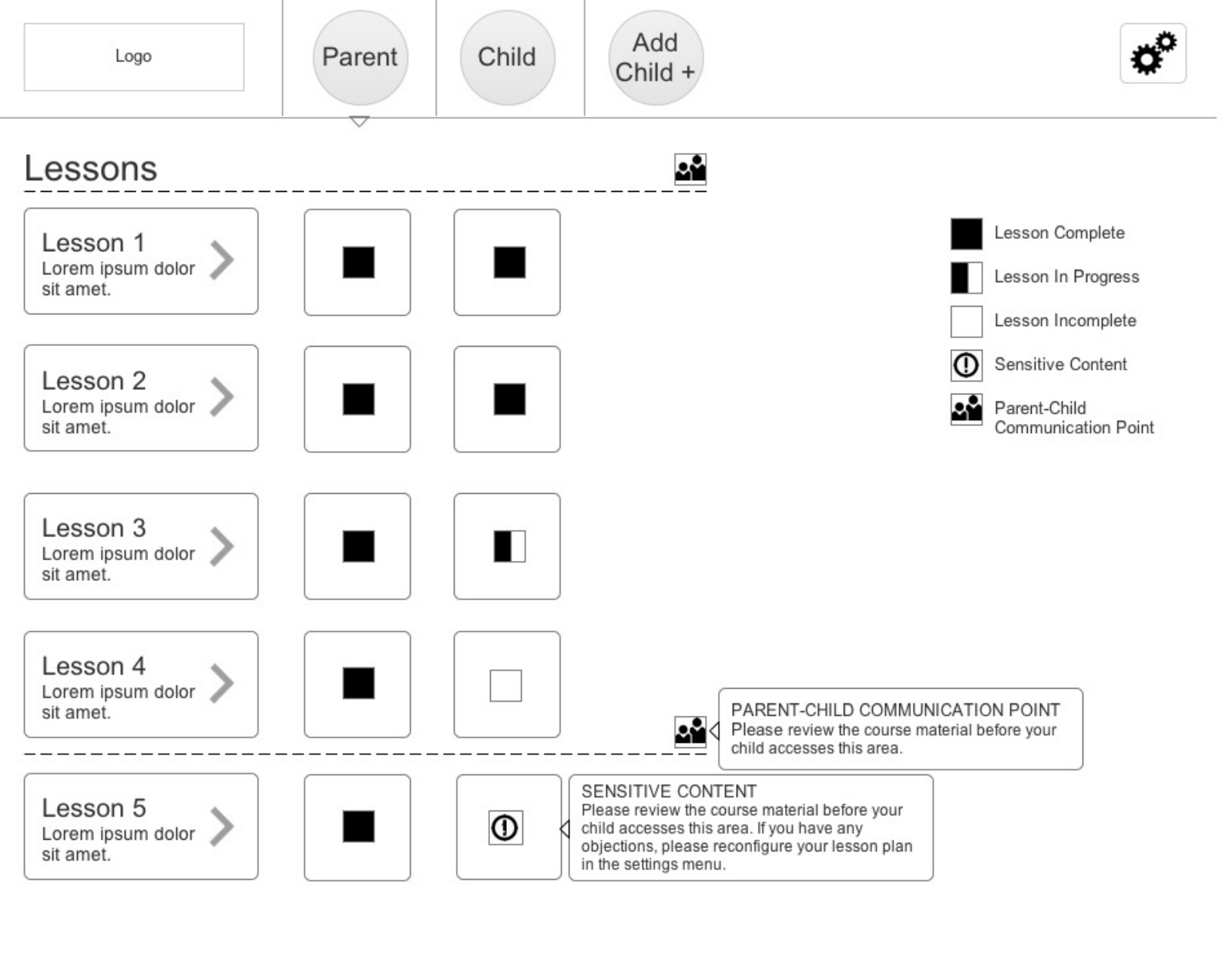
contextual ANALYSIS
Most health education tools for youth either skew too clinical or fail to sustain attention. The SSS intervention tackled this by using an intergenerational gaming approach—bringing both kids (11–14) and parents into the process simultaneously.
To support this dual audience, the program extended beyond the game itself:
-
Adventure Game: 18 levels with 50 interactive skill clusters, 54 card-battle sequences, and 7 parent-youth “PEP Talks.”
-
Parent Notifications: A text-based system updating parents on progress and prompting them to start conversations.
-
Parent Training Portal: A dedicated website for skills training and progress monitoring.
This structure ensured education wasn’t siloed but instead reinforced through dialogue and shared experiences.
Gameplay loop
The gameplay loop in The Secret of Seven Stones was structured around cycles of learning, testing, and progression. Players began with a Dojo Lesson to learn core mechanics, then earned cards—artifact, creature, or randomizer—as rewards for success. If they failed, they were redirected into a tutorial puzzle for reinforcement before moving forward.
From there, players advanced into tutorial battles, where they applied their skills in card-based encounters. Wins granted new artifact cards, while losses required replay until mastery was achieved. This ensured that youth could practice and internalize skills through repetition.
At key milestones, the loop integrated parent/child training modules, prompting structured “PEP Talks” outside the game. These sessions bridged digital play with real-world dialogue, before unlocking narrative progress such as communication with the Chronotitan and incremental upgrades like improved vision. This rhythm of learn → test → reward → parent engagement reinforced both engagement and behavioral learning.
This structure ensured that every stage of play carried both entertainment and instructional weight. By combining card battles for skill practice, puzzles for problem-solving, and parent/child modules for real-world dialogue, the loop reinforced learning across multiple contexts. The result was a game that felt rewarding and adventurous while still delivering on its core mission: helping youth build practical decision-making skills and strengthening communication with their parents.
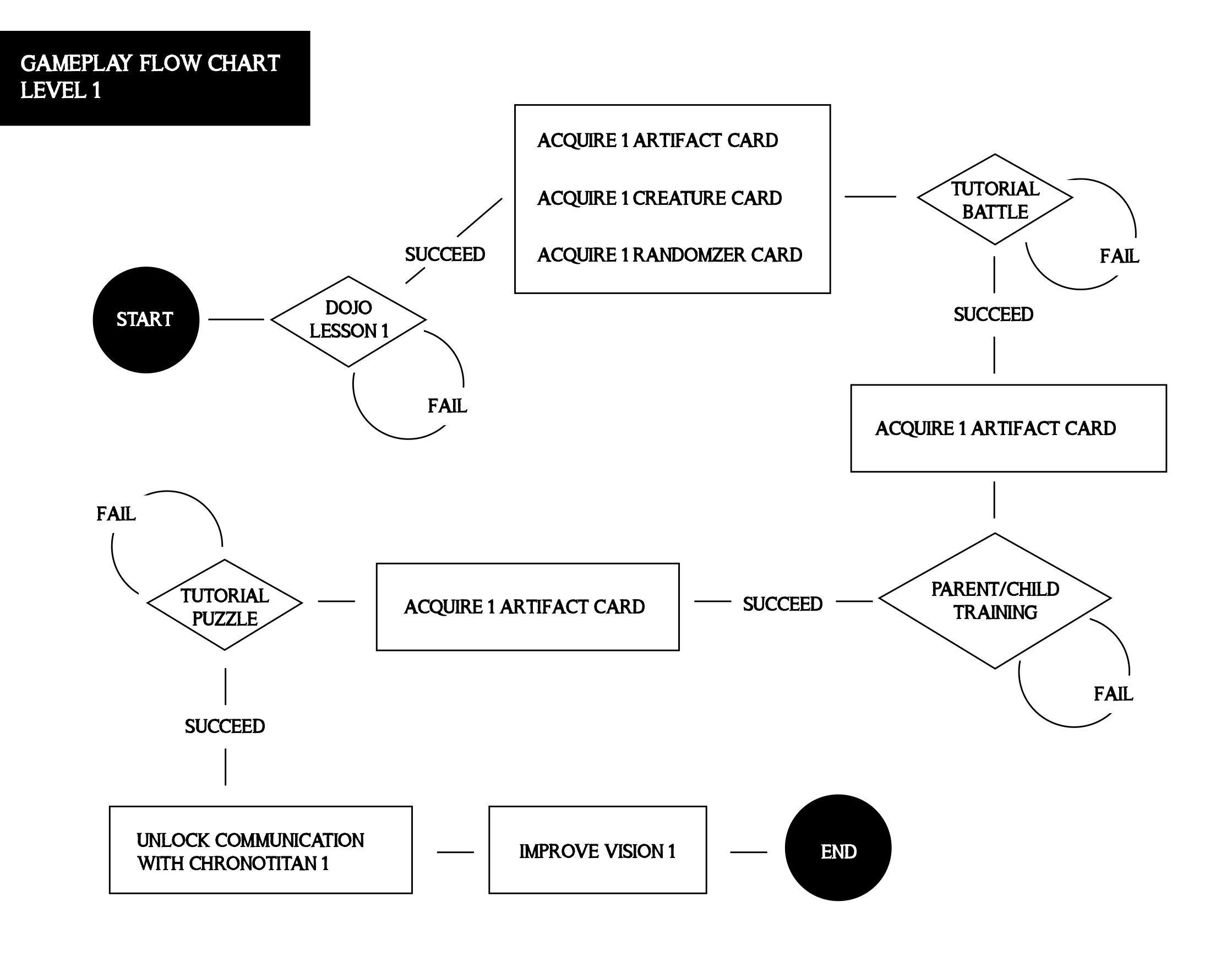
creative effort
The design process followed a research-to-design pipeline:
-
Ideation: Rough sketches and narrative concepts addressing behavioral objectives.
-
Concept Design: Game loop flows, character explorations, and early interactions tested for usability.
-
Visual Execution: Character, card, and environment art created in Sketch, Photoshop, and Illustrator.
-
Development: Flash was used to build animations, card battles, and skill-based sequences, balancing narrative with interactivity.
-
Sound Design & Voiceover: Designed audio cues, ambient soundscapes, and character voiceovers to enhance immersion and ensure narrative clarity for younger players.
The game ultimately delivered 15 behavioral skill domains and over 1300 learning objectives in a way that felt engaging and approachable.
PERSONAS and local Tester recruitment
Recruitment happened through community flyers, with gift card incentives to encourage participation in testing sessions. Parent-youth dyads were central to design validation, ensuring content matched real-world communication challenges.
-
Parents: Needed reassurance of scientific rigor, opportunities for guided conversations, and visibility into their child’s progress.
-
Youth (11–14 years old): Needed a fun, immersive, and relatable game that introduced health concepts in a non-lecturing way
Beyond demographics, we focused on the emotional journey of both groups: youth experienced the excitement of unlocking characters, cards, and new abilities, while parents received prompts and training that transformed gameplay into teachable moments. This dual-track design ensured that both audiences felt engaged, respected, and empowered throughout the experience.
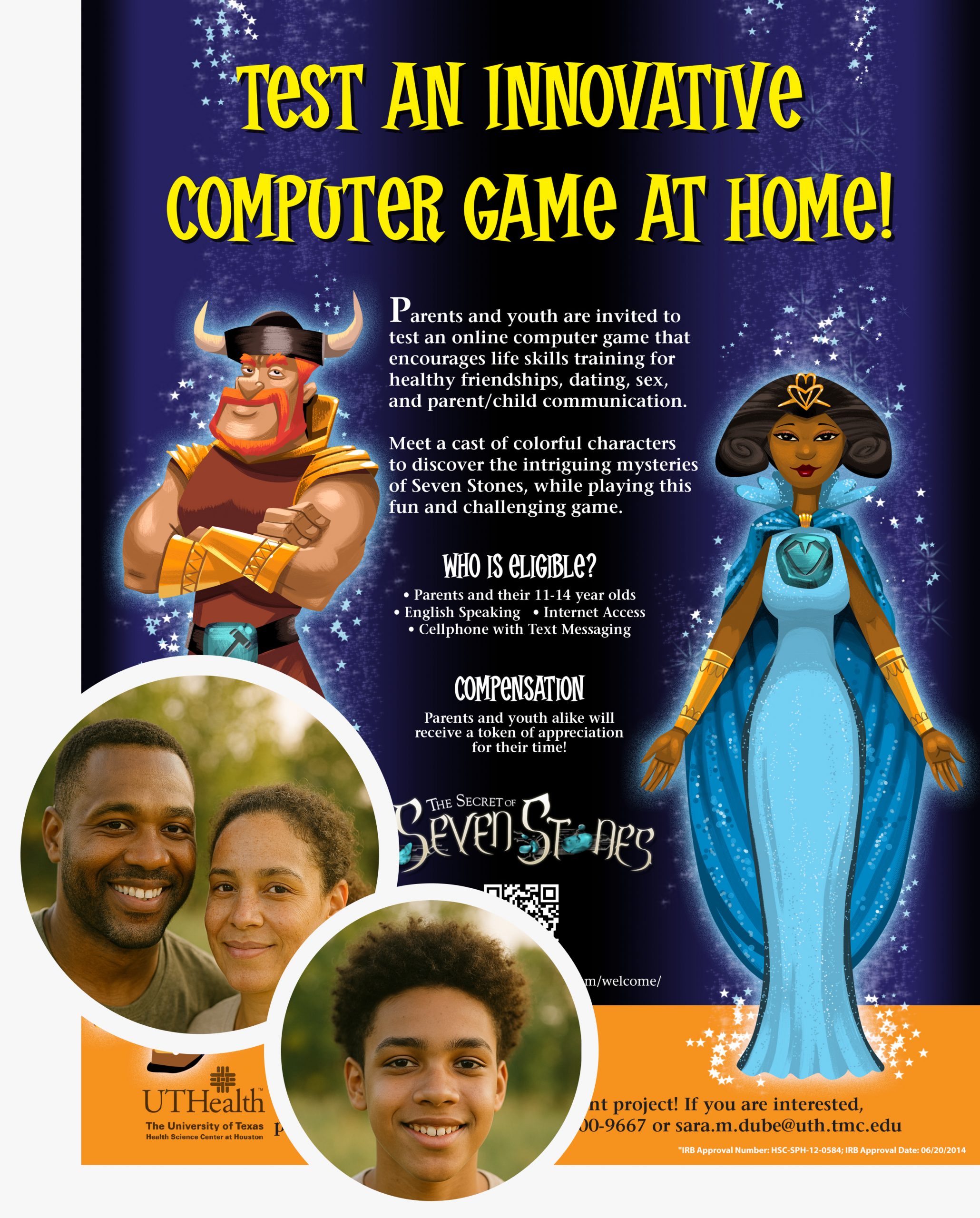
feedback and refinement
The development of The Secret of Seven Stones relied heavily on continuous feedback from both researchers and participants. Parent-youth dyads were brought into the process to test early prototypes, offering valuable insights into the relatability of characters, the clarity of instructions, and the pacing of the gameplay. Researchers provided ongoing guidance to ensure that every design choice remained aligned with public health goals, particularly around sensitive topics such as relationships and sexual health.
Through multiple rounds of iteration, the team refined visual assets, adjusted the difficulty of card battles and puzzles, and fine-tuned the structure of parent-youth “PEP Talks.” Each change moved the game closer to its goal of being both engaging and educational, ensuring that youth felt immersed while parents felt confident in the value of the experience. This collaborative process was essential in shaping the final product into a research-backed intervention that was ready for large-scale efficacy trials.
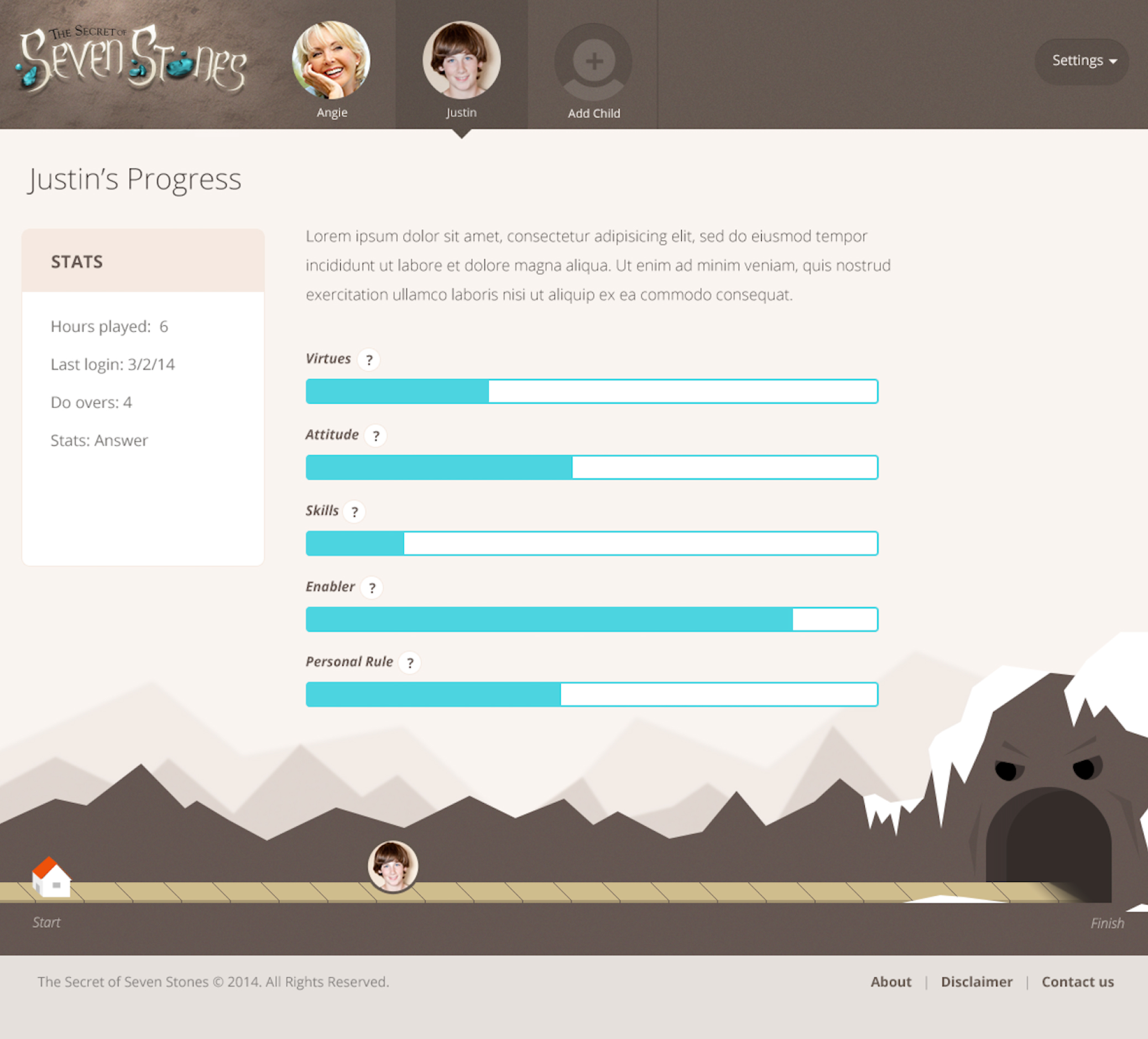
LAUNCH & Impact
The program demonstrated that serious, research-driven interventions could be made engaging for both youth and parents. By embedding education into a story-driven, multi-channel experience, SSS succeeded in:
-
Providing practical communication prompts for parents.
-
Delivering behavioral skills training across multiple domains.
-
Proving feasibility for an RCT trial — ensuring credibility in both the academic and public health communities.
While the focus wasn’t commercial adoption, the project became a model for how design and behavioral science can intersect to deliver measurable public health value.

